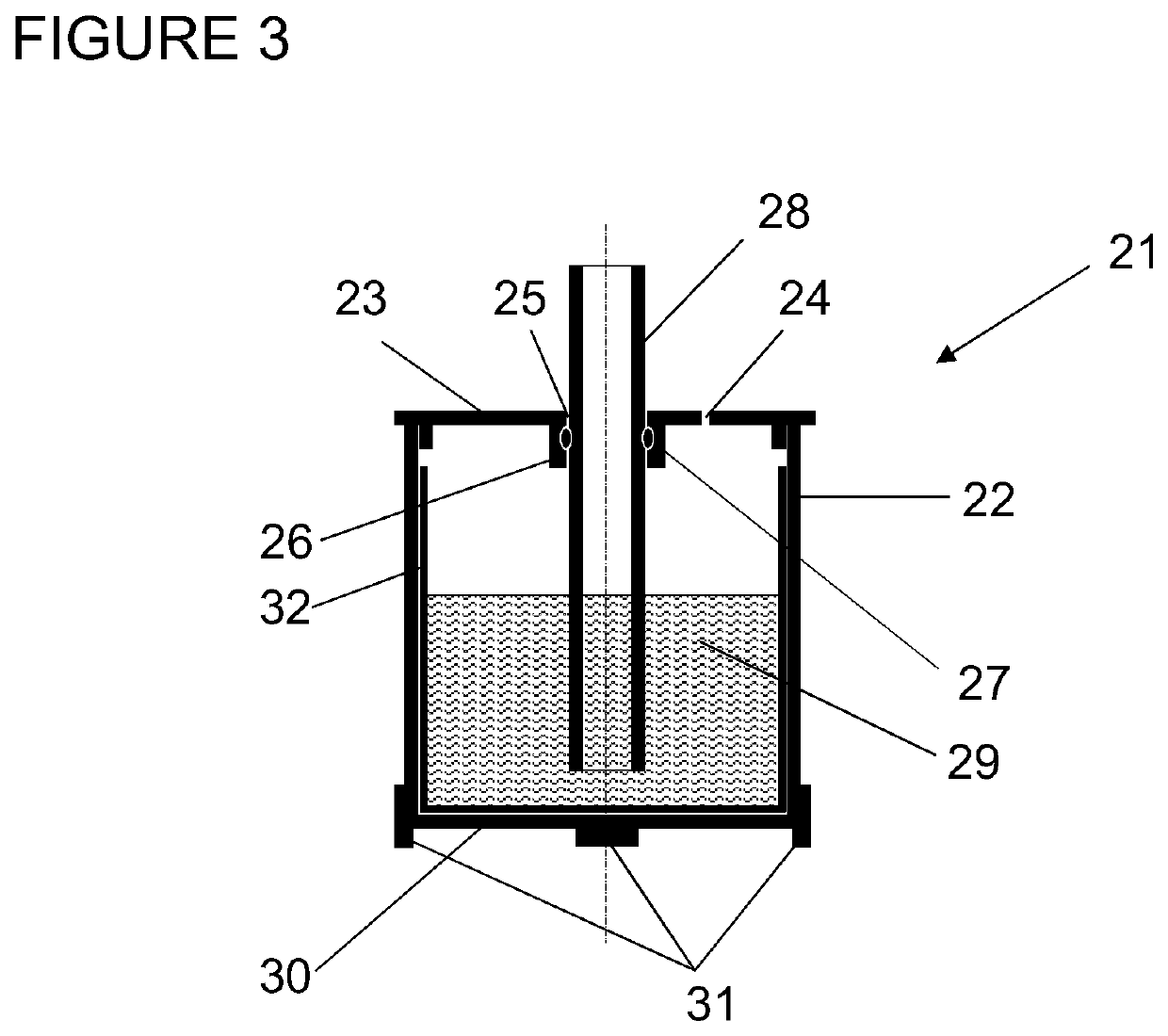Receiving vessel for the gravimetric calibration of pipettes
a gravimetric and pipette technology, applied in the field of receiving vessels, can solve the problems of being relatively complicated and time-consuming to install and uninstall, reducing demanding calibration tolerances set by this standard, so as to reduce the rate of weight loss, reduce the rate of evaporation, and simplify the use
- Summary
- Abstract
- Description
- Claims
- Application Information
AI Technical Summary
Benefits of technology
Problems solved by technology
Method used
Image
Examples
Embodiment Construction
[0039]A state-of-the-art evaporation-trapping device 1 for the gravimetric calibration and verification of laboratory pipettes is illustrated schematically in FIG. 1. This type of evaporation-trapping device, which is available commercially as an accessory kit to an analytical balance, includes a receiving vessel 7, a special load receiver 9 to support the receiving vessel 7, and an evaporation-trapping enclosure 2 with a ring-shaped, open tub 5, a lid 3 and a centering ring or support base 10.
[0040]To convert an analytical laboratory balance from general weighing duty to pipette calibration, the standard weighing pan and weighing pan carrier of the balance are uninstalled and replaced by the special load receiver 9. The support base or centering ring 10 is installed on the weighing compartment floor 11 of the balance. The evaporation-trapping enclosure 2 is set in place on the support base 10, the ring-shaped, open tub 5 is filled with water 6, the receiving vessel 7 is seated on t...
PUM
 Login to View More
Login to View More Abstract
Description
Claims
Application Information
 Login to View More
Login to View More - R&D
- Intellectual Property
- Life Sciences
- Materials
- Tech Scout
- Unparalleled Data Quality
- Higher Quality Content
- 60% Fewer Hallucinations
Browse by: Latest US Patents, China's latest patents, Technical Efficacy Thesaurus, Application Domain, Technology Topic, Popular Technical Reports.
© 2025 PatSnap. All rights reserved.Legal|Privacy policy|Modern Slavery Act Transparency Statement|Sitemap|About US| Contact US: help@patsnap.com



